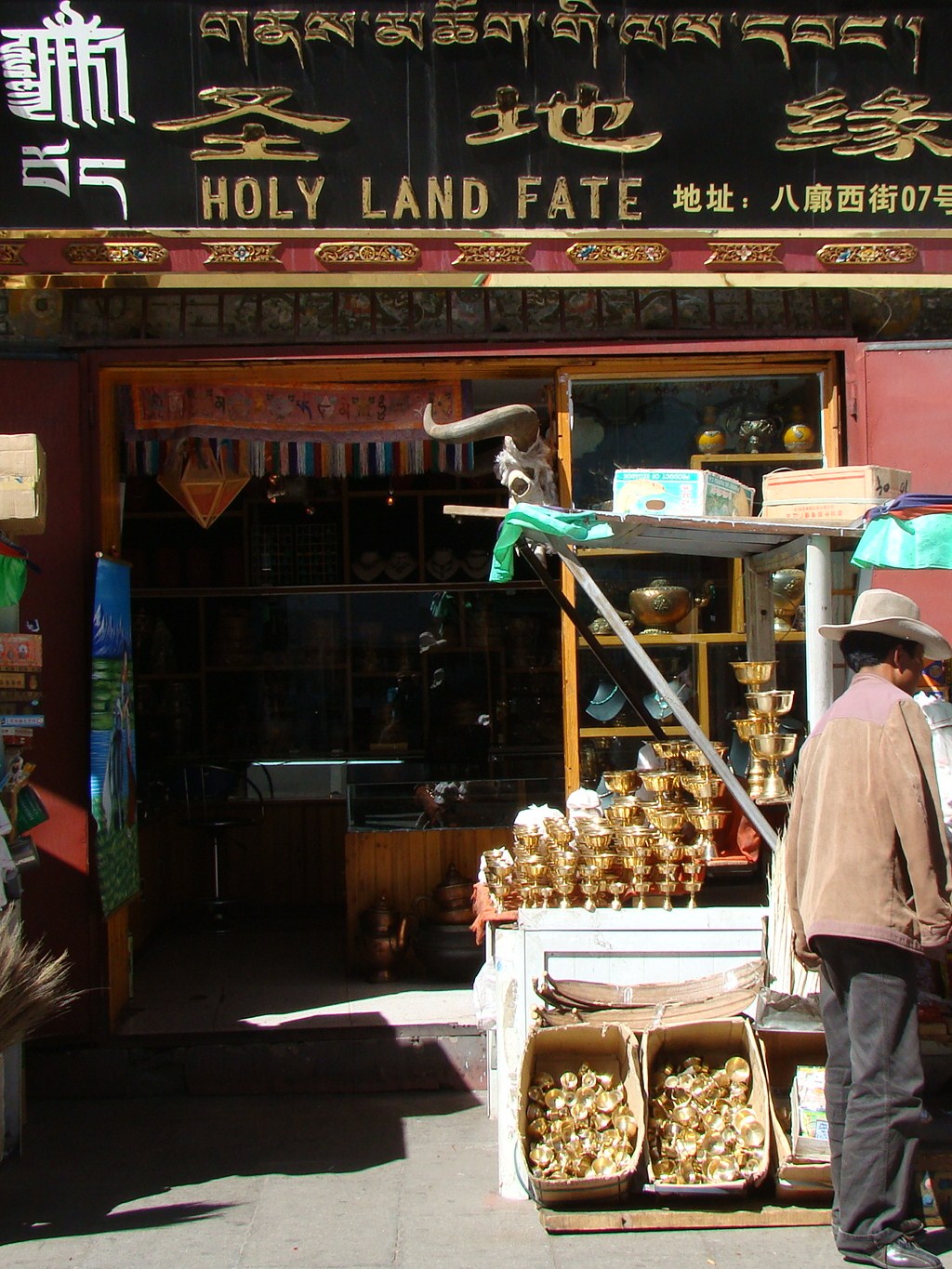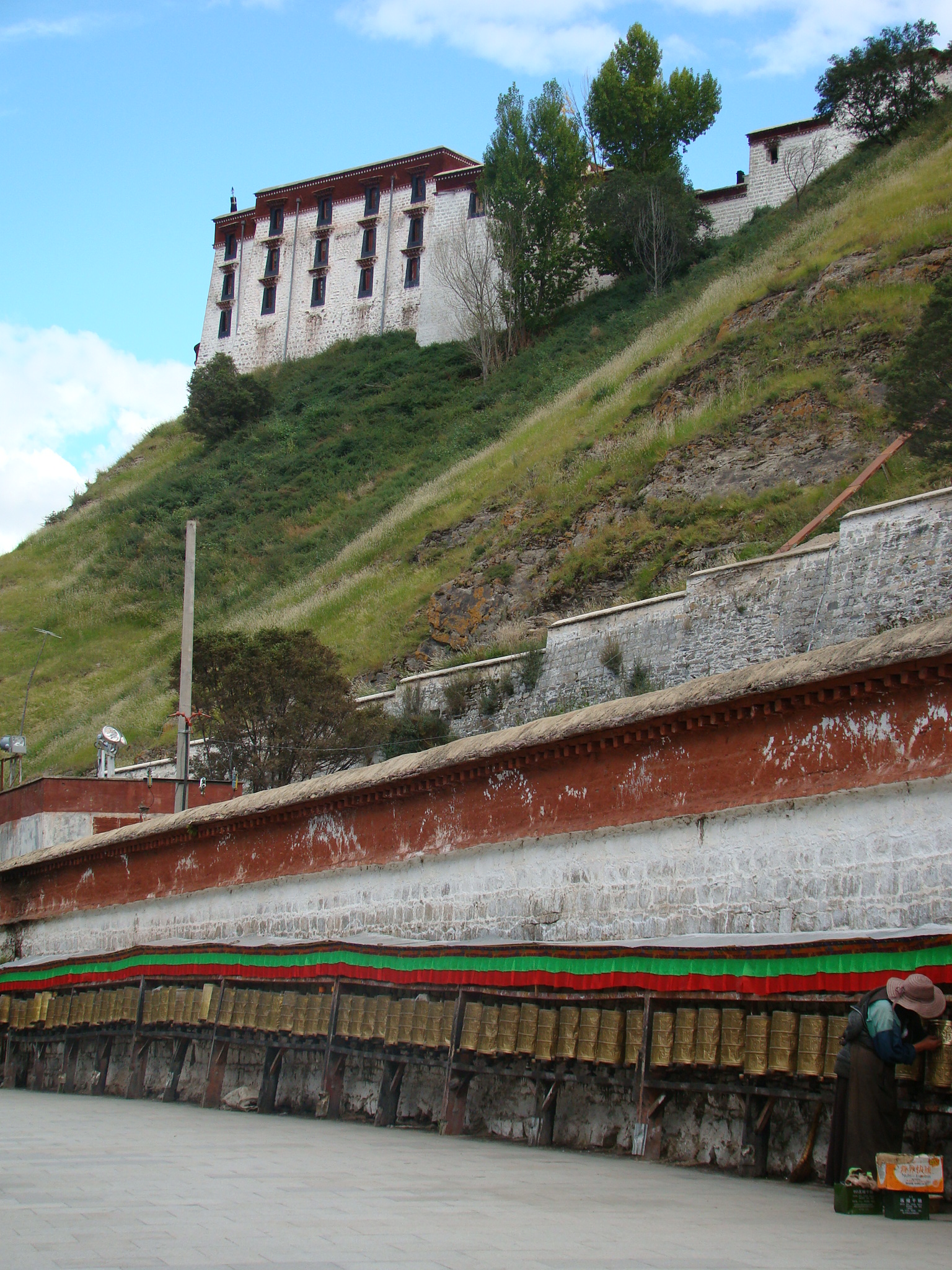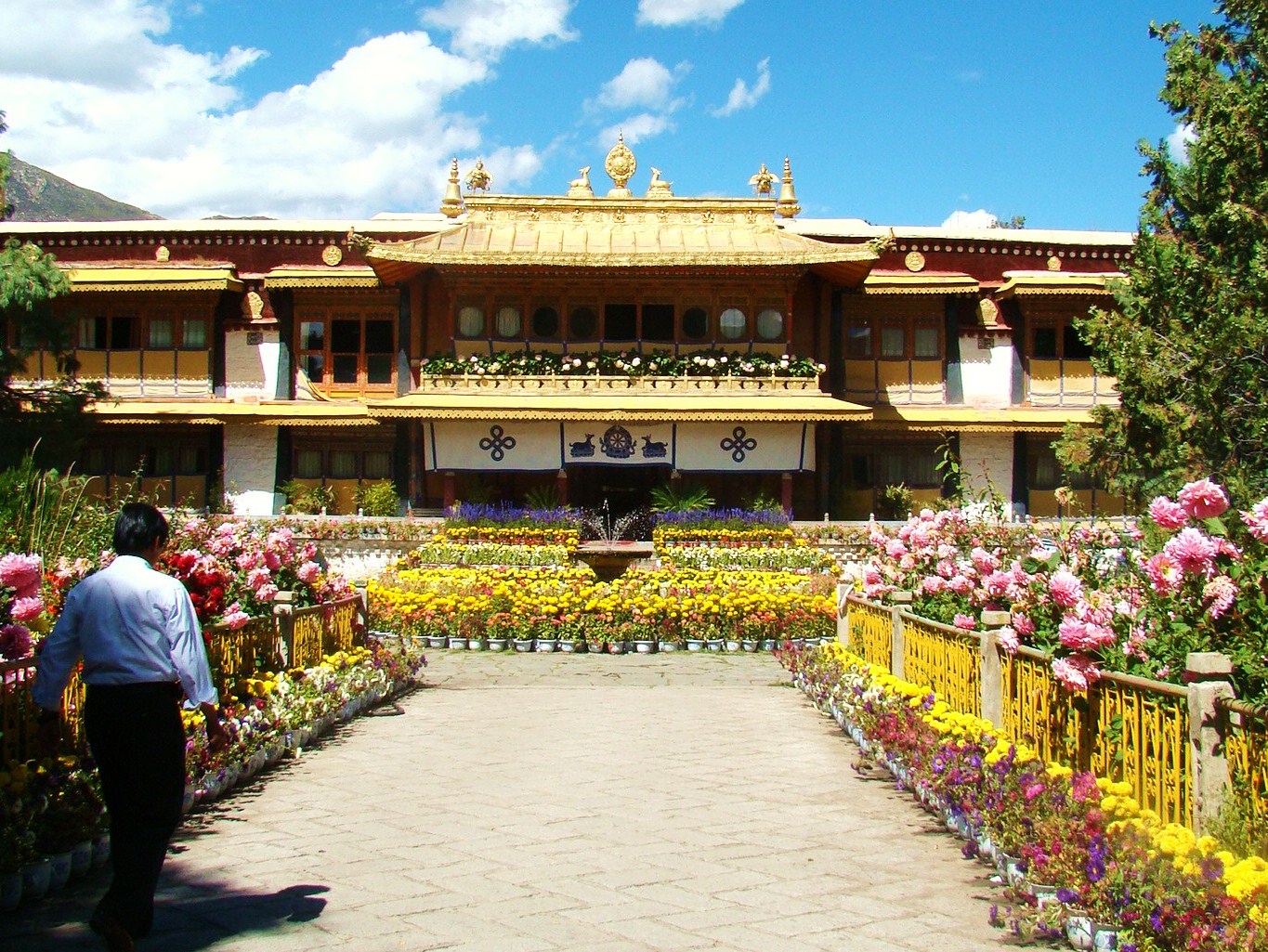| Up
until the communist invasion in 1949, the country of Tibet
could be traced back thousands of years. It has a long and
complex history. Nomadic tribes populated Tibet as early as
the 2nd Century B.C. and discoveries indicate a much longer
history of human kind. Inhabitants were most likely in
existence in Tibet ever since the later part of the
Paleolithic Age. By the Neolithic Age these inhabitants had
scattered around the region which formed the basis of the
Tibetan race as we know it today. Although written history
only dates back to the seventh century, from the reign of
Emperor Songtsen Gampo, there is evidence of the Tibetan
empire and independence from as far back as 127 B.C.
The Tsanpo Period -
127.B.C. - 842 A.D.
Nyatri Tsanpo was the first of the Tsanpos. This period
lasted from 127 B.C. through 842 A.D. at the death of Lang
Dharma, the last of the Tsanpos.
 Over
forty-two various Tsanpos ruled over Tibetan lands during
this period, up until the reign of Songtsen Gampo. Gampo
combined many tribes from all over Tibet to form his Tubo
dynasty, moved the capital to Lhasa and married two
princesses, one from China and one from Nepal. He built the
Jokhang temple and began the building of the
Potala Palace. Gampo sent his minister Sambhota to India
to study Sanskrit. On his return, he invented the present
Tibetan script based on Sanskrit and inscription of history
started.
more
on Gampo Over
forty-two various Tsanpos ruled over Tibetan lands during
this period, up until the reign of Songtsen Gampo. Gampo
combined many tribes from all over Tibet to form his Tubo
dynasty, moved the capital to Lhasa and married two
princesses, one from China and one from Nepal. He built the
Jokhang temple and began the building of the
Potala Palace. Gampo sent his minister Sambhota to India
to study Sanskrit. On his return, he invented the present
Tibetan script based on Sanskrit and inscription of history
started.
more
on Gampo
Genghis Khan Period - 842
- 1260 A.D.
Tibet decentralized from around 842 to 1260 A.D. subsequent
to the fall of the Tubo Dynasty caused by a revolt of the
common people. This period saw the region split into smaller
Monastic pockets of influence. Tubo society was altered from
one of bonded labor to one with more freedom and
independence. In the mid 13th Century, to avoid the wrath of
the Khan empire, Tibetan leaders submitted to Genghis Khan
whose central administration passed the power to Sakya
Pandita who became Viceroy to Tibet. Khuble Khan himself
became a convert to Tibetan Buddhism in 1270 after studying
with the Viceroy. Around 1350, after the collapse of the
Mongal Empire, Tibet came together once more as the power
and influence of the Sakayapa Lamas declined. See Sakya
monastery.
The Dalai Lamas Period -
14th Century
In the 14th Century a reformist movement led by Tsongkapa
challenged the Sakayapa. The new monastic school known as
Gelukpa (yellow hats) garnered the support of the local
chieftains and surviving Mongal lords. In 1578 Alton Khan,
the Mongal ruler, conferred the title of Dalai Lama (ocean
of wisdom) on the third high priest of the Gelukpa sect,
Sonam Gyatso, and this title was passed down to his
predecessors. From the early 1600, the Dalai Lamas, known as
spiritual leaders of the region and believed to be the
emanations of Avalokitesvara, held the religious and
political power. Deciding upon meditation to develop the
mind, rather than wars, Tibet enjoyed a few hundred years of
relative tranquility and peace in their self-imposed
isolation.
Gyatso - 1617 - 1682
 Between 1617 and 1682 the fifth
Dalai Lama, Lobsan Gyatso reunified Tibet and extended his
harmonious blend of religious and political authority to the borders of the
region. With
its strategic position between the great civilizations of India and
China, Tibet increasingly became a chess piece in the game of obtain
and possess. Tibet was plunged into chaos in 1720 when the
Chinese tore down the walls of Lhasa and quartered a large
garrison there whilst annexing part of Northern Tibet.
Although Tibet did request military assistance from China at
times, Tibet always considered itself to be an independent
country. Tibetans are not Chinese. They don't resemble
Chinese peoples. Tibetans don't even speak Chinese, nor is
their culture similar to Chinese. Their religion is Tibetan
Buddhism, not Confucianism or the Chinese version of
Buddhism. Between 1617 and 1682 the fifth
Dalai Lama, Lobsan Gyatso reunified Tibet and extended his
harmonious blend of religious and political authority to the borders of the
region. With
its strategic position between the great civilizations of India and
China, Tibet increasingly became a chess piece in the game of obtain
and possess. Tibet was plunged into chaos in 1720 when the
Chinese tore down the walls of Lhasa and quartered a large
garrison there whilst annexing part of Northern Tibet.
Although Tibet did request military assistance from China at
times, Tibet always considered itself to be an independent
country. Tibetans are not Chinese. They don't resemble
Chinese peoples. Tibetans don't even speak Chinese, nor is
their culture similar to Chinese. Their religion is Tibetan
Buddhism, not Confucianism or the Chinese version of
Buddhism.
Nepalese Tax - Mid 19th
century
By the mid 19th century whatever power the Chinese claimed to have
in Tibet faltered and fell away. When faced with another
Ghurka invasion, China did not respond. The
Nepalese exacted an annual tax on Tibet. A period followed of
intense rivalry between the British Raj in India and the Russians
because the British feared that the Russians wanted to control Tibet
as a gateway to India. Everyone wanted a piece of this buffer state
in Southeast Asia.
British Invasion - 1903
In 1903 a British force invaded Tibet and reached Lhasa and the 13th
Dalai Lama fled to Mongolia and returned in 1907 when Tibet and the
British had somehow become close friends. In 1910 the Chinese once
again invaded Tibet. This time the Dalai Lama took refuge in India
and his return was followed by the demise of the Quing dynasty.
Tibet expelled the remaining Chinese troops to an area which
roughly defines the border of the TAR, Tibet Autonomous
Region of China today. Tibet signed treaties with other
nations, which to some minds means it was recognized as a
country.
World War II - 1949 Chinese Invasion
During the second World War, Tibet was neutral and when India became
independent in 1947 and the threat of British resistance
disappeared, the Chinese invaded Tibet again in 1949. Tibetan forces
were no match for the invaders. With a few old muskets and rusted
guns they put up an honorable fight, but they were mowed
down within days. The 14th Dalai Lama (current Dalai Lama)
was left no choice
but to sign an agreement with the Chinese. In 1951 a seventeen
point peaceful liberation agreement was signed. This agreement left
Tibet to handle its internal affairs allowing freedom of religion,
whilst China took control of the military and broader political
affairs of the country. With little choice, Tibet also agreed to give up any right to
independence. For a detailed review,
click here
1959 - Present
The following few years saw the Chinese steadily carving off
bits of the country whilst growing in influence all over Tibet. An
invitation to an assassination party finally made the Dalai
Lama realize the intention to take his life.
 After
a major uprising by the Tibetan people in 1959 which was
brutally put down by Chinese troops and armaments, the Dalai
Lama was forced to flee under the cover of darkness dressed
as a commoner. Sick at heart he fell ill and entered India
in tears. After
a major uprising by the Tibetan people in 1959 which was
brutally put down by Chinese troops and armaments, the Dalai
Lama was forced to flee under the cover of darkness dressed
as a commoner. Sick at heart he fell ill and entered India
in tears.
During Mao's Cultural
Revolution over 6000 monastic universities (monasteries)
were destroyed by Red Guards. Millions of people died from
starvation from Mao's agricultural policies to grow wheat
rather than barley on the frigid mountain plains. When
rebuilding began, new roads, railroads and infrastructure
smothered the Tibetan dream of having their own country,
culture, employment and religious leader.
If it was true that Tibet
was always a part of China like the Chinese claim, the
Tibetan people would certainly have some knowledge of the
Chinese language, customs and religion. But until the
invasion and subsequent occupation, Tibetans lived isolated
and solitary in their land, speaking their own language,
living their own customs, and worshipping in their own ways.
The Dalai Lama and the Tibetan government now live and
operate in Dharamasala, India as they work toward a peaceful
resolution to their dilemma. More than 80,000 Tibetans have
followed and currently live in exile in India waiting and
praying to return to their homeland.
more |
